How to stop rhizoctonia denting potato yields this spring
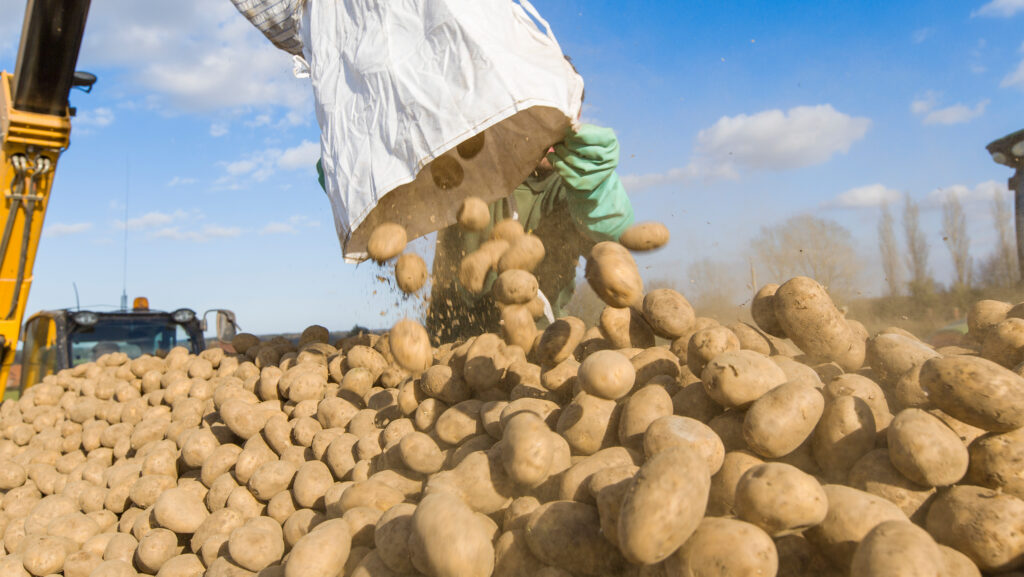 © GNP
© GNP Researchers agree that work needs to be done to understand the impact of changing growing systems on a key soil-borne pathogen of potato crops.
Until then, the advice on managing Rhizoctonia solani remains the same.
This includes optimising establishment and early growth, utilising seed and soil-applied fungicide treatments, and efficient harvest management to limit the disease threat to future crops.
See also: How soil testing can tackle sugar beet cyst nematode
Rhizoctonia prevalence
R solani is a complex of diverse soil-borne pathogens classified in different anastomosis groups (AGs) based on their biology, genetics and pathogenicity characteristics.
The last significant UK survey of these groups affecting potato crops was carried out by James Woodhall at Harper Adams University during 2001-03.
Samples from infected tubers revealed that 92% of isolates were AG3PT, 7% were AG2-1 and less than 1% AG5 and AG8.
A decade later, soil testing of wheat fields in England, by Matt Brown at the University of Nottingham, revealed more than 67% incidence of AG2-1, and many samples also contained AG3.
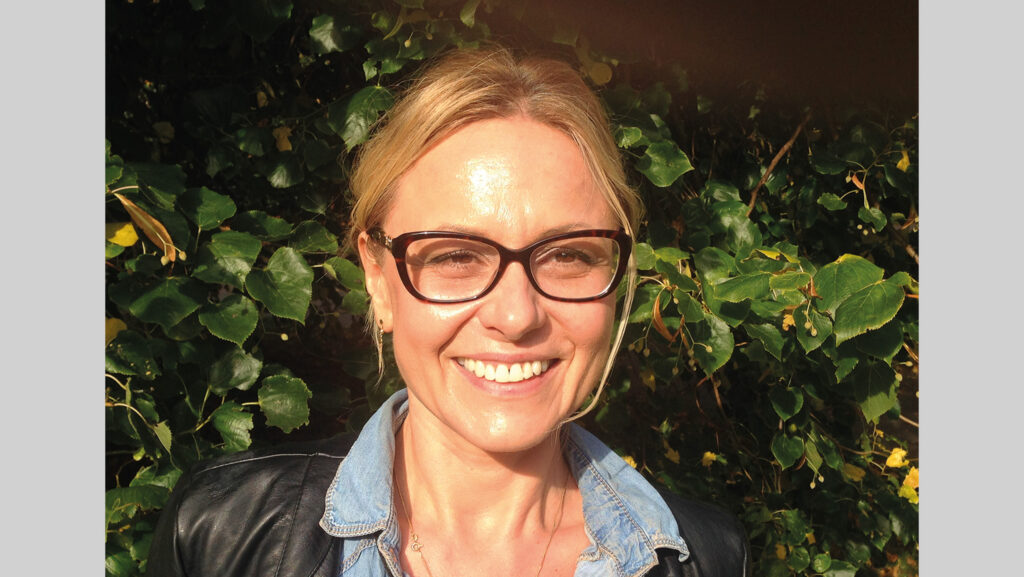
© Supplied by Rumiana Ray
Last year, Prof Rumiana Ray at the University of Nottingham found both AG3 and AG2-1, in addition to Pythium ultimum and fusarium species on plants with classic rhizoctonia symptoms of stem canker, root lesions and pruning.
“Pythium and fusarium species often form soil-borne complexes with Rhizoctonia solani, having a synergistic effect on disease development and severity,” she says.
“But the main pathogens that should be considered a risk to potatoes remain the virulent isolates of AG3 and AG2-1.”
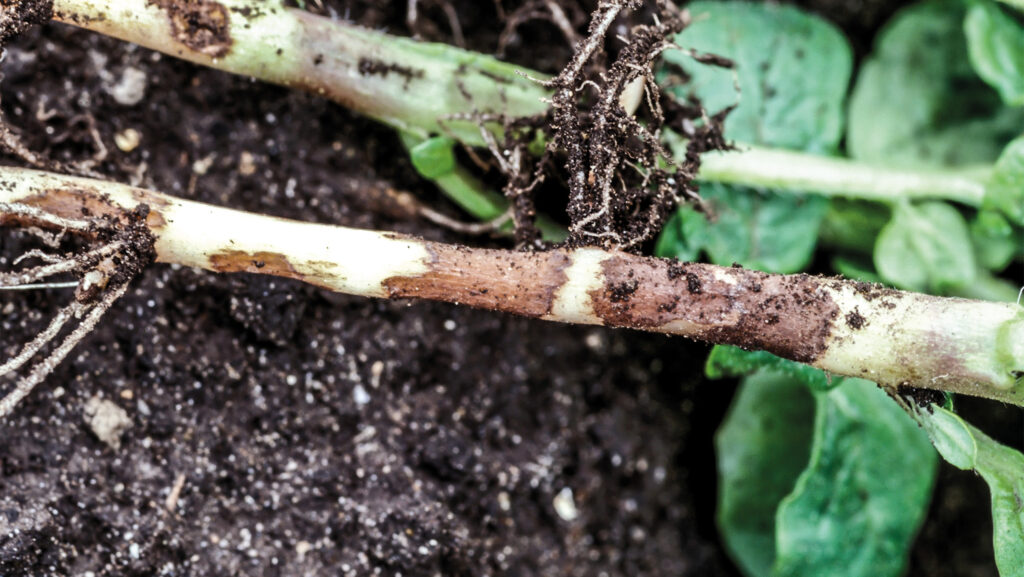
Stem canker © Blackthorn Arable
Knowledge gap
While the existing data and experience suggest it is business as usual, Rumiana believes there are knowledge gaps that need filling, particularly as farming systems have changed rapidly over recent years.
Many farms growing potatoes are moving less soil between crops, and reduced tillage has been shown to encourage the survival of R solani mycelium (fresh thread-like structures) and sclerotia (compacted mycelial mass) in the soil.
There are also more species of plants being grown in some rotations, whether that is driven by a greater area of cover crops, environmental schemes, or more cash crop options.
In theory, this diversity could reduce available disease inoculum for susceptible crops, including potatoes.
However, AG2-1 is most virulent on brassica crops and can also colonise wheat, while AG3 is unlikely to be eradicated by crop rotation or cover crops where infected debris remains throughout a cropping sequence of suitable hosts.
This means the persistence of R solani in the soil in the form of sclerotia and/or fresh mycelium could be maintained or increased under regenerative systems.
“But we have not seen any recent surveys against a backdrop of regenerative practices, so it’s an area where there needs to be more work.
“Growers and agronomists need to know the current soil-borne disease situation to assess the impact of these practices and implement alternative or corrective measures, if needed,” explains Rumiana.
Risk assessments
Rumiana and her team at Nottingham are developing rapid in-field diagnostics for R solani, so growers can diagnose what is in their soils, fine-tune management, and assess the effectiveness of such measures.
Until knowledge gaps are filled and testing kits arrive, risk assessments for R solani in potatoes remain unchanged.
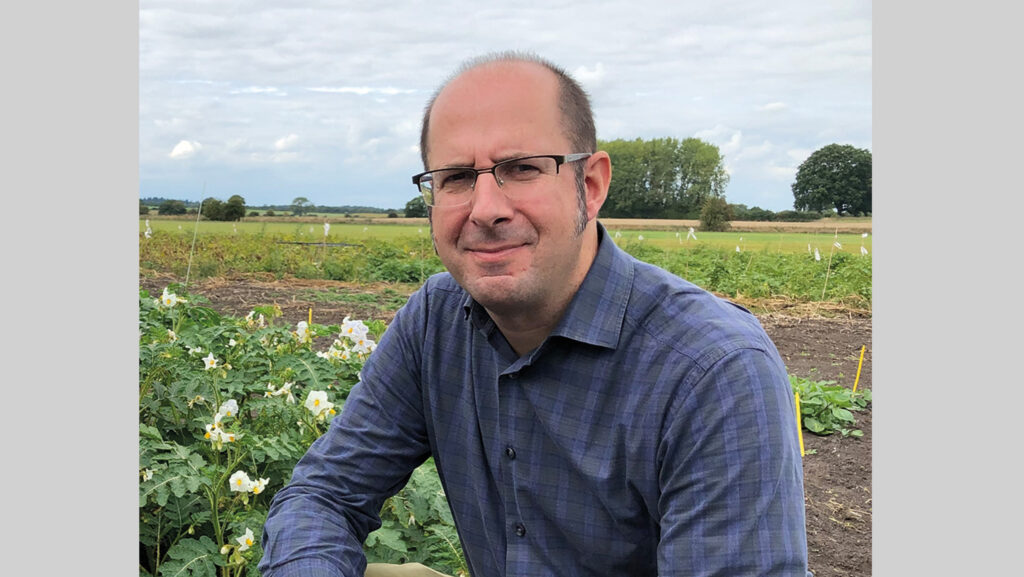
Supplied by Matthew Back
According to Dr Matthew Back, reader in nematology at Harper Adams University, soil type is one of the key drivers.
Where present, the pathogen causes most damage in cool and dry/slightly moist soil conditions (45% of water holding capacity).
Air-filled pores are ideal for the pathogen to grow its hyphal networks once triggered by chemical signals emitted by a host’s roots.
Cool conditions slow down potato development increasing the risk of infection and the development of stem and stolon cankers, particularly before emergence.
Infected seed is also a major source of inoculum, and the presence of other pests and pathogens in the soil can exacerbate its impact in the potato crop.
“We know potato cyst nematode (PCN) feeding leads to increased stolon infections,” says Matthew.
“This is likely down to the enhanced metabolic activity within roots caused by the nematode feeding sites, leading to changes in root exudates.”
Rhizoctonia control
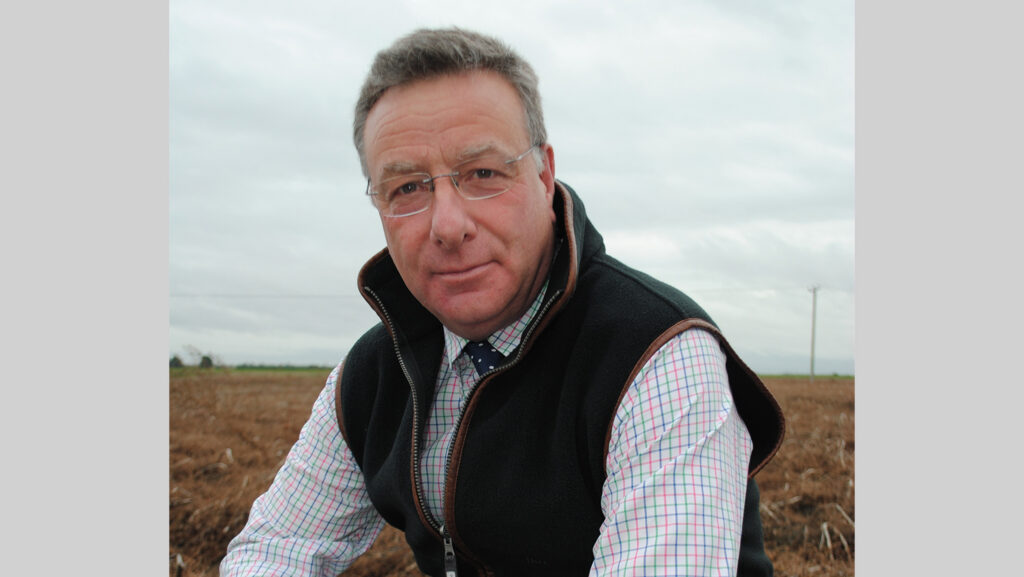
© Supplied by Andrew Goodinson
With little published information on cultivar resistance, growers are unable to use genetics to minimise the impact of R solani in a growing crop, as it hasn’t been a priority for breeders.
Hutchinsons agronomist and potato specialist Andrew Goodinson says that leaves good husbandry, combined with the application of soil- and seed-applied fungicides, as the main control measures where risk is identified.
Also, there is usually a disconnect between the seed producer and ware grower meaning information the buyer gets about a seed crop is limited.
He would like to see these relationships become closer to help growers make more informed decisions about managing seed stocks after delivery, including seed treatments for R solani.
Andrew also stresses the importance of washing seed samples and inspecting tubers for obvious signs of black scurf.
Presence on tubers can be invisible to the naked eye, so a magnifying lens is key to a thorough assessment of seed-borne risk.
He also carefully considers field history to estimate how much inoculum there might be in the soil.
“Last time a field was in potatoes, was the crop late lifted? The risk of black scurf development increases the longer the period between burning off and lifting,” he explains.
Andrew recommends use of in-furrow fungicides such as azoxystrobin or fluxapyroxad in situations where soil-borne risk is identified and combines that with a seed treatment where needed.
Liquid options
There are liquid seed-treatment options such as flutolanil-based RhiNo.
Andrew sees these becoming much more popular in the future because seed is treated in the shed over a roller table ahead of planting.
This takes an operation away from a busy planter operator already grappling with accurate seed spacing and in-furrow applications of fungicide and fertiliser, before even considering powder seed treatment application.
However, the majority of his growers are still using powder flutolanil formulation RhiNo DSG, as it gives a degree of flexibility, particularly where seed is delivered to the farm on a “just-in-time” basis.
“But whatever seed treatment you decide to use, their effectiveness does rely on excellent coverage,” he adds.
“That makes correct setup, calibration and maintenance of on-planter applicators crucial to success.”
Planting conditions
Planting conditions and adequate early nutrition are the final consideration.
Timely cultivations and seed-bed preparations that avoid soil compaction are key to ensuring rapid establishment and early root and shoot development.
This will help the crop to grow away from the threat of rhizoctonia.
“Anything that can reduce stress and encourage crop development is a good thing and we are using phosphite-based products,” he says.
“Other biological products will play an increasingly important role in potatoes, but we are still learning about how and when they are best applied for consistent success.”

